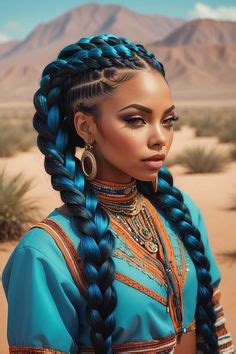Black hair is a canvas for creativity and a testament to the rich cultural heritage of the African diaspora. From sleek and sophisticated to voluminous and vibrant, there is a vast array of hairstyles that cater to the unique textures and styles of black people. Embracing the diversity of black hairstyles is not only a celebration of beauty but also a form of self-expression.

Historical Significance of Black Hairstyles
Black hairstyles have a long and storied history rooted in African culture. Braids, cornrows, and dreadlocks have been worn for centuries, serving both practical and aesthetic purposes. According to the book “African Hairstyles” by Rose Murray, these hairstyles protected hair from the elements, helped manage thick and curly hair, and signified social status or cultural affiliation.
In the United States, black hairstyles have often been politicized and scrutinized. During the Civil Rights Movement, natural hairstyles like the Afro became symbols of black pride and resistance. Today, black hairstyles continue to evolve, blending traditional elements with contemporary trends.
Understanding Black Hair Textures
The unique textures of black hair are determined by the shape of the hair follicles. According to a study published in the “Journal of Investigative Dermatology,” black hair follicles are typically more elliptical than those of other racial groups, resulting in hair that is naturally curly or coily. Understanding your hair texture is essential for choosing the right hairstyles and products.
Black Hairstyles for Different Hair Textures
1. Type 3 (Curly)
- Loose Curls: Soft and defined curls that can be styled with leave-in conditioners, curl creams, and diffusing.
- Tight Curls: Smaller and more defined curls that require more moisture and hold. Twist-outs, bantu knots, and flexi-rods are popular styling options.
2. Type 4 (Coily)
- Coily: Extremely tight and springy curls that require a lot of moisture and definition. Finger coiling, wash-and-gos, and protective styles like braids and twists work well for this texture.
- Kinky: Zigzag and sharp angular curls that need even more moisture and detangling. Crochet braids, locs, and natural wigs are recommended.
Types of Black Hairstyles
The versatility of black hair allows for endless styling possibilities. Here are some of the most popular and iconic black hairstyles:
1. Braids
- Box Braids: Square or rectangular braids that are sectioned off and braided tightly against the scalp.
- Cornrows: Narrow, raised rows of braids that have been worn in Africa for centuries.
- Dreadlocks: Interlocking strands of hair that form dense, rope-like locks.
- French Braids: Three-strand braids that are woven into intricate patterns.
2. Natural Styles
- Afro: A voluminous, natural hairstyle that celebrates the texture of black hair.
- Blowout: Hair that is straightened with a blow dryer and brush.
- Wash-and-Go: A style where hair is washed and styled with leave-in conditioners and curl activators.
- Twist-outs: Hair that is twisted and allowed to dry naturally, resulting in defined and elongated curls.
3. Protective Styles
- Weaves: Human or synthetic hair extensions that are attached to the natural hair for added length, volume, or texture.
- Wigs: Made from real or synthetic hair, wigs provide a temporary change of style without altering the natural hair.
- Braided Extensions: Braids that are attached to the natural hair to create a variety of styles, such as box braids, cornrows, and Senegalese twists.
- Loc Extensions: Extensions that are attached to locs to add length or thickness.
Maintaining Healthy Black Hair
Proper hair care is essential for healthy and vibrant black hair. Follow these tips to maintain strong and beautiful locks:
- Moisturize Regularly: Black hair tends to be dry, so it is crucial to keep it hydrated. Use leave-in conditioners, hair masks, and oil treatments to replenish moisture.
- Detangle Gently: Curly and coily hair is prone to tangles. Use a wide-toothed comb or a detangling brush to gently remove knots.
- Trim Regularly: Regular trims remove split ends and encourage hair growth. Get trims every 6-8 weeks to keep your hair healthy and prevent breakage.
- Protect from Heat: Heat styling can damage hair. Limit the use of heat tools and opt for low-heat settings when necessary.
- Embrace Your Natural Texture: Avoid chemical treatments that alter the natural texture of your hair. Embrace your unique curls and coils, and explore styles that complement your hair’s structure.
Conclusion
Black people hairstyles are a celebration of diversity, creativity, and self-expression. From traditional braids to modern natural styles, there is a hairstyle for every texture and personality. Understanding your hair type and following proper hair care practices are essential for maintaining healthy and beautiful locks. Embrace the versatility of black hair and explore the endless possibilities for creating stunning and unique hairstyles.
